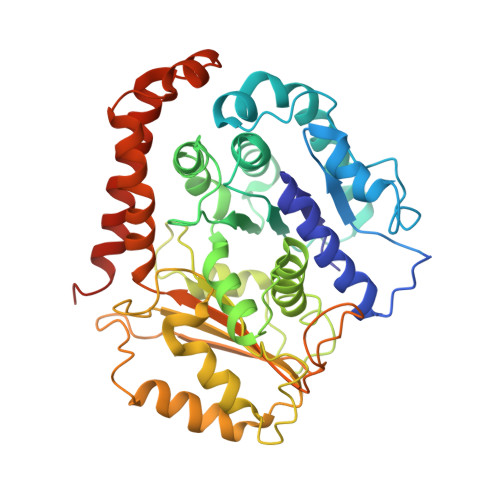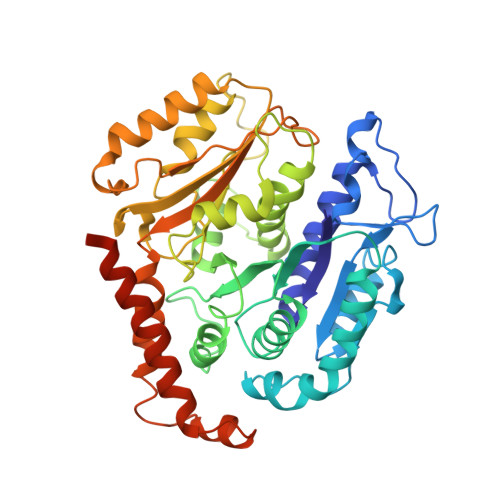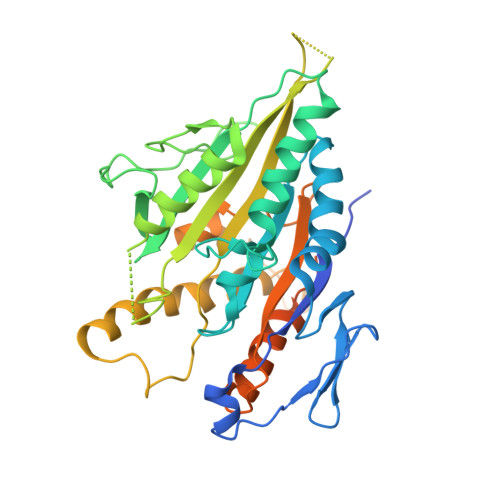Interplay between the Kinesin and Tubulin Mechanochemical Cycles Underlies Microtubule Tip Tracking by the Non-motile Ciliary Kinesin Kif7.
Jiang, S., Mani, N., Wilson-Kubalek, E.M., Ku, P.I., Milligan, R.A., Subramanian, R.(2019) Dev Cell 49: 711-730.e8
- PubMed: 31031197
- DOI: https://doi.org/10.1016/j.devcel.2019.04.001
- Primary Citation of Related Structures:
6MLQ, 6MLR - PubMed Abstract:
The correct localization of Hedgehog effectors to the tip of primary cilia is critical for proper signal transduction. The conserved non-motile kinesin Kif7 defines a "cilium-tip compartment" by localizing to the distal ends of axonemal microtubules. How Kif7 recognizes microtubule ends remains unknown. We find that Kif7 preferentially binds GTP-tubulin at microtubule ends over GDP-tubulin in the mature microtubule lattice, and ATP hydrolysis by Kif7 enhances this discrimination. Cryo-electron microscopy (cryo-EM) structures suggest that a rotated microtubule footprint and conformational changes in the ATP-binding pocket underlie Kif7's atypical microtubule-binding properties. Finally, Kif7 not only recognizes but also stabilizes a GTP-form of tubulin to promote its own microtubule-end localization. Thus, unlike the characteristic microtubule-regulated ATPase activity of kinesins, Kif7 modulates the tubulin mechanochemical cycle. We propose that the ubiquitous kinesin fold has been repurposed in Kif7 to facilitate organization of a spatially restricted platform for localization of Hedgehog effectors at the cilium tip.
Organizational Affiliation:
Department of Molecular Biology, Massachusetts General Hospital, Boston, MA 02114, USA; Department of Genetics, Harvard Medical School, Boston, MA 02115, USA.






















